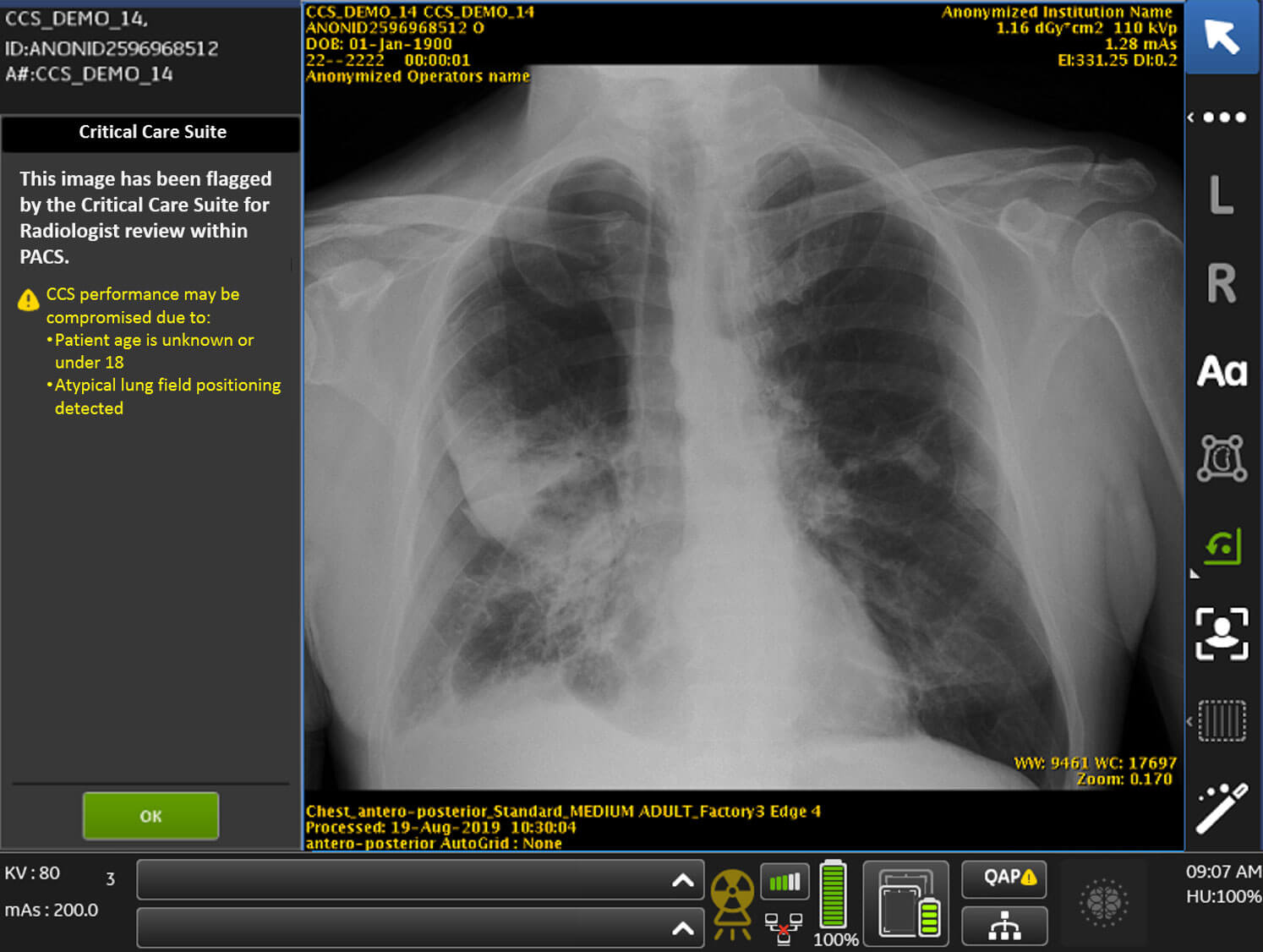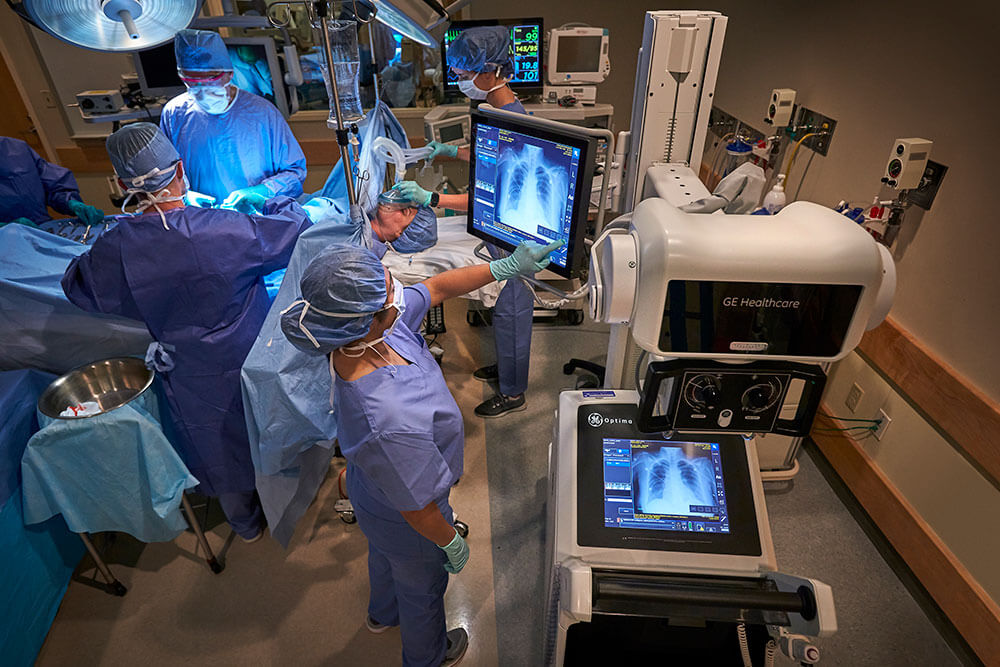General Electric Healthcare Chooses UH to Clinically Evaluate First-of-its-kind Imaging System
July 12, 2020
Artificial intelligence identifies collapsed lungs, alerts radiologists
GE Healthcare (GEHC) chose University Hospitals (UH) Cleveland Medical Center in November of 2019 as the first hospital in the US to evaluate its new mobile x-ray system enabled with Critical Care Suite, the world’s first on-device AI solution for triage & notification of critical findings and quality errors. The tool is designed to quickly identify and prioritize cases such as pneumothorax (collapsed lung), which is crucial as ICUs see an increase in patients during the COVID-19 crisis.
When a lung doesn’t inflate, it can’t bring oxygen into the bloodstream or remove carbon dioxide from the body. A person with a collapsed lung may experience shortness of breath, discomfort when breathing or chest pain on one side. In severe cases, a person may go into shock, which is a life-threatening condition. A chest x-ray is needed to confirm pneumothorax, but patients also need a rapid diagnosis.
 Critical Care Suite interface.
Critical Care Suite interface.Radiologists at UH Cleveland Medical Center read dozens of images every day. This process takes several hours. To assist them, GEHC’s Critical Care Suite software acts as artificial intelligence on board the Optima XR240amx mobile x-ray unit. Once a chest x-ray is taken, it recognizes if a patient has a collapsed lung and flags the image for immediate reading, setting the patient on a rapid path to treatment.
“Employing this equipment means better care for our patients,” said Amit Gupta, MD, Modality Director, Diagnostic Radiography and Principal Investigator on the project. “It’s now not just the humans working for them; now the machines are assisting in the patient’s welfare. This improves workflow as well as patient care.”
“The Critical Care suite is an exciting innovation in cardiothoracic imaging. It represents a close clinical and research partnership between GEHC and University Hospitals that spans almost 20 years,” said Robert “Chip” Gilkeson, MD, Director, Cardiovascular Imaging Center and Vice Chairman of Research.
“Today there are a multitude of AI algorithms being developed, but very few solutions seamlessly integrate into actual clinical workflow. GEHC selected UH to be the first USA pilot site because of the extensive research relationship, progressive IT and Radiologist teams looking to integrate AI to improve workflow, and the center of excellence for cardiothoracic care,” said Katelyn Nye, GM, Global Mobile Radiography & Artificial Intelligence at GE Healthcare.
UH evaluated the equipment in the clinical setting, reporting back to GEHC before the company made the system available commercially. UH gauged the sensitivity of the algorithm used to detect critical findings, evaluated workflow and determined the benefit to patients.
 Critical Care Suite OR setting.
Critical Care Suite OR setting.Dr. Gupta and Dr. Gilkeson completed the evaluation phase for the Critical Care Suite in December, and the technology is now in daily clinical practice – flagging between 7 to 15 collapsed lungs per day within the hospital. No one on the team could have predicted the onset of the COVID-19 pandemic, but this technology and future research with GEHC may enhance the capability to improve care for COVID-19 patients in the ICU. The Critical Care Suite is now assisting in COVID and non-COVID patient care as the Optima XR240amx travels to intensive care units within the hospital.
UH Media Relations Contact: Carly Belsterling | 412-889-8866 | Carly.Bersterling@UHhospitals.org
Tags: COVID-19, Medical Innovations, Radiology


